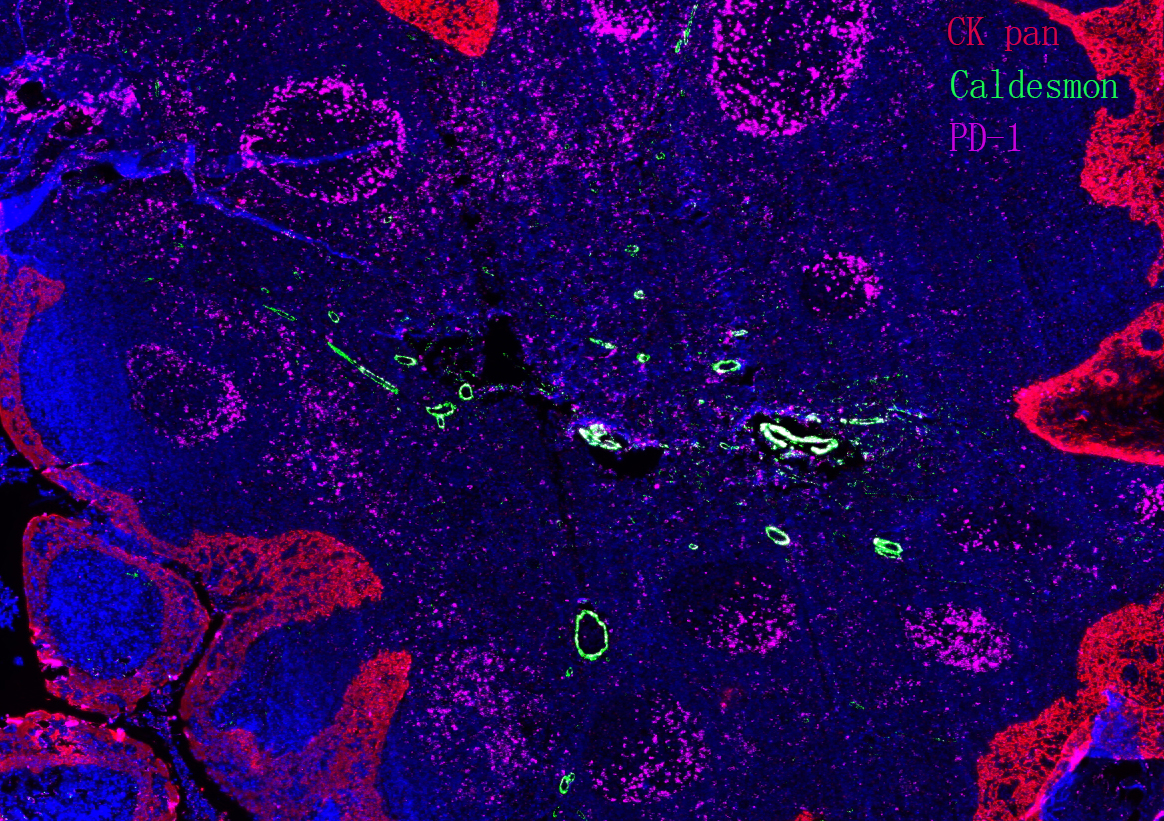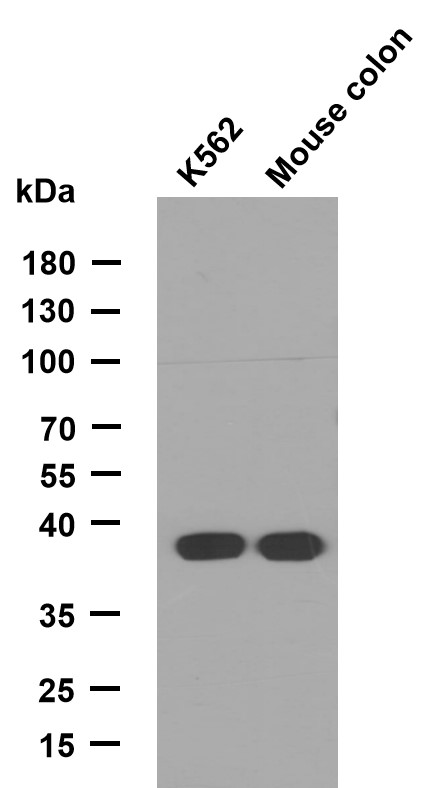Caldesmon (ABT125) mouse mAb
- Catalog No.:YM6826
- Applications:IHC;ELISA
- Reactivity:Human;
- Target:
- Caldesmon
- Fields:
- >>Vascular smooth muscle contraction
- Gene Name:
- CALD1 CAD CDM
- Protein Name:
- Caldesmon pan
- Human Gene Id:
- 800
- Human Swiss Prot No:
- Q05682
- Immunogen:
- Synthesized peptide derived from human Caldesmon pan AA range: 100-200
- Specificity:
- The antibody can recognize human h-caldesmon and l-caldesmon protein.
- Formulation:
- PBS, 50% glycerol, 0.05% Proclin 300, 0.05%BSA
- Source:
- Mouse, Monoclonal/IgG2a, kappa
- Dilution:
- IHC 1:200-400. ELISA 1:500-5000
- Purification:
- The antibody was affinity-purified from ascites by affinity-chromatography using specific immunogen.
- Storage Stability:
- -15°C to -25°C/1 year(Do not lower than -25°C)
- Other Name:
- Caldesmon (CDM)
- Molecular Weight(Da):
- 93kD
- Observed Band(KD):
- 93kD
- Background:
- This gene encodes a calmodulin- and actin-binding protein that plays an essential role in the regulation of smooth muscle and nonmuscle contraction. The conserved domain of this protein possesses the binding activities to Ca(2+)-calmodulin, actin, tropomyosin, myosin, and phospholipids. This protein is a potent inhibitor of the actin-tropomyosin activated myosin MgATPase, and serves as a mediating factor for Ca(2+)-dependent inhibition of smooth muscle contraction. Alternative splicing of this gene results in multiple transcript variants encoding distinct isoforms. [provided by RefSeq, Jul 2008],
- Function:
- domain:The N-terminal part seems to be a myosin/calmodulin-binding domain, and the C-terminal a tropomyosin/actin/calmodulin-binding domain. These two domains are separated by a central helical region in the smooth-muscle form.,function:Actin- and myosin-binding protein implicated in the regulation of actomyosin interactions in smooth muscle and nonmuscle cells (could act as a bridge between myosin and actin filaments). Stimulates actin binding of tropomyosin which increases the stabilization of actin filament structure. In muscle tissues, inhibits the actomyosin ATPase by binding to F-actin. This inhibition is attenuated by calcium-calmodulin and is potentiated by tropomyosin. Interacts with actin, myosin, two molecules of tropomyosin and with calmodulin. Also play an essential role during cellular mitosis and receptor capping.,PTM:In non-muscle cells, phosphorylation by CDC2 during mit
- Subcellular Location:
- Cytoplasmic
- Expression:
- High-molecular-weight caldesmon (isoform 1) is predominantly expressed in smooth muscles, whereas low-molecular-weight caldesmon (isoforms 2, 3, 4 and 5) are widely distributed in non-muscle tissues and cells. Not expressed in skeletal muscle or heart.
- June 19-2018
- WESTERN IMMUNOBLOTTING PROTOCOL
- June 19-2018
- IMMUNOHISTOCHEMISTRY-PARAFFIN PROTOCOL
- June 19-2018
- IMMUNOFLUORESCENCE PROTOCOL
- September 08-2020
- FLOW-CYTOMEYRT-PROTOCOL
- May 20-2022
- Cell-Based ELISA│解您多样本WB检测之困扰
- July 13-2018
- CELL-BASED-ELISA-PROTOCOL-FOR-ACETYL-PROTEIN
- July 13-2018
- CELL-BASED-ELISA-PROTOCOL-FOR-PHOSPHO-PROTEIN
- July 13-2018
- Antibody-FAQs
- Products Images

- Human appendix tissue was stained with anti-Caldesmon(ABT125) antibody.

- Human smooth muscle tissue was stained with anti-Caldesmon(ABT125) antibody.

- Fluorescence multiplex immunohistochemical analysis of normal human appendix tissue (formalin-fixed paraffin-embedded section).The section was incubated in 3 rounds of staining; in the order of CK PAN .( Catalog no:YM6815 1/200 dilution), PD-1.(Catalog no: YM6208 1/200 dilution), Caldesmon pan. (Catalog no:YM6826 1/200 dilution),each using a separate fluorescent tyramide signal amplification system : Treble-Fluorescence immunohistochemical mouse/rabbit kit Catalog NO: RS0035 (pH9.0)



